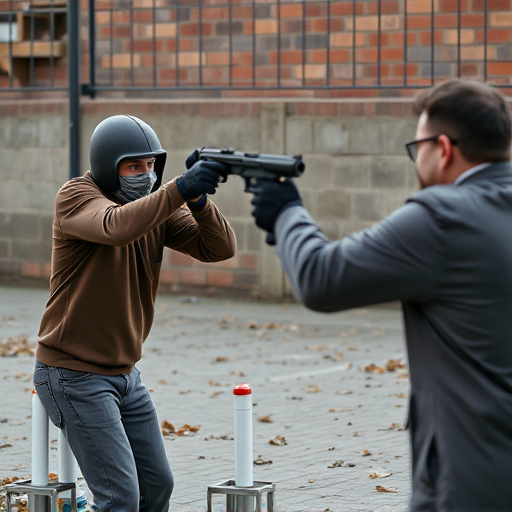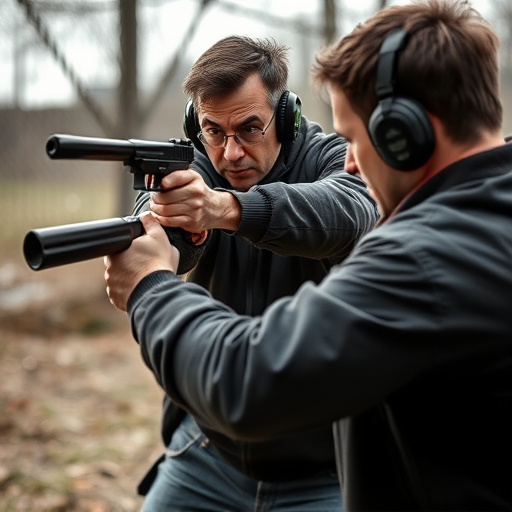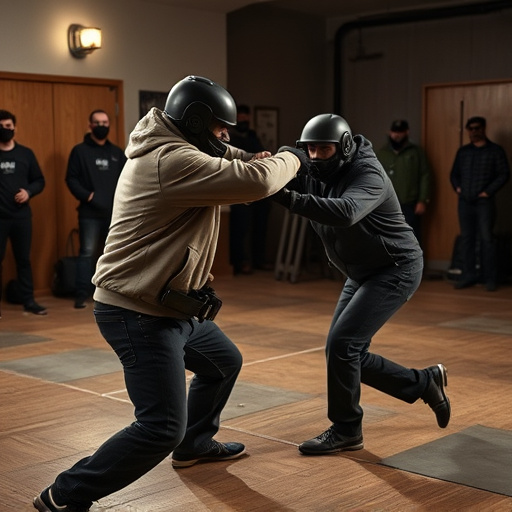Concealable stun guns for women prioritize precise electrode spacing (1-2mm) for effective shock delivery. This design maximizes current flow to quickly incapacitate attackers, offering crucial escape time. Women can discreetly carry these stylish tools in various hiding spots for personal safety in unpredictable situations. Electrode arrangement, size, weight, and trigger response are key factors when choosing a stun gun tailored to specific needs. Thorough testing ensures effectiveness, reliability, and optimal performance in real-world scenarios.
“Enhance your self-defense arsenal with a detailed exploration of stun gun electrode spacing and its impact on effectiveness. Understanding the optimal placement and spacing of electrodes in concealable stun guns is crucial for women seeking personal safety. This article guides you through the intricacies, from the science behind electrode positioning to practical tips on concealment. Discover the factors influencing range and power, learn testing methods, and gain insights into choosing the best concealable stun guns tailored for women’s self-defense needs.”
- Understanding Stun Gun Electrode Placement
- Concealment Options for Women's Self-Defense
- Optimal Spacing for Maximum Shock Effectiveness
- Factors Influencing Stun Gun Range and Power
- Testing and Evaluating Concealable Stun Guns
Understanding Stun Gun Electrode Placement

Stun gun electrode placement is a critical aspect of their effectiveness, especially considering the diverse range of concealable stun guns designed for women’s personal safety. These compact and often stylish devices are engineered to be easily concealed, making them a popular choice for individuals seeking to protect themselves discreetly. The electrode spacing plays a pivotal role in delivering an impactful stun by ensuring precise contact with the attacker’s body.
For concealable stun guns, electrodes are strategically positioned to allow users to target key nerve points and muscle groups with maximum force. This optimal placement enables women to incapacitate an assailant quickly, giving them time to escape or seek help. Understanding the electrode arrangement can empower users to make informed decisions when choosing a stun gun that aligns with their personal safety needs, particularly in situations where swift action is crucial.
Concealment Options for Women's Self-Defense

Women looking to empower themselves with self-defense tools have a range of options, and one effective choice is a concealable stun gun. These devices offer a discreet way for women to protect themselves in various situations. The market provides several stylish and compact designs tailored specifically to cater to women’s needs, ensuring they can easily carry it without drawing unnecessary attention.
With various hiding spots available, from purses and clutches to belt-clipped devices or even stun guns disguised as everyday items like flashlights or keychains, women have numerous concealment options. This versatility allows them to stay prepared while maintaining their sense of style, providing peace of mind in an unpredictable world.
Optimal Spacing for Maximum Shock Effectiveness

In the realm of self-defense tools, concealable stun guns for women have gained prominence as a powerful and practical option. When it comes to their effectiveness, one crucial factor is electrode spacing—the distance between the positive and negative terminals that deliver the electric shock. For optimal shock effectiveness, this spacing should be precisely calculated. Studies show that a consistent and narrow gap of around 1-2 millimeters between electrodes maximizes the current flow, resulting in a more powerful stun.
This ideal spacing ensures that when the stun gun makes contact with a target, the electric discharge is concentrated and efficient. Wider gaps may reduce the intensity of the shock, while too narrow a spacing could lead to excessive electrical resistance. Therefore, users should prioritize tools with adjustable electrode configurations to cater to different situations and ensure maximum impact for self-defense purposes, especially in close-quarters encounters where concealable stun guns are most useful.
Factors Influencing Stun Gun Range and Power

The effectiveness of a stun gun isn’t just about its power—it’s also greatly influenced by factors that determine its range and impact. One key aspect is concealable stun guns for women, which are designed to be easily hidden, making them ideal for personal protection. However, these smaller devices often have shorter ranges compared to larger models. The distance a stun gun can reach and the power it delivers depend on several elements: the type of electrodes, their placement, and the current’s intensity.
Electrode spacing plays a crucial role in both range and effectiveness. Closer electrode spacing increases the concentration of electrical energy, enhancing stop-power but potentially reducing the device’s ability to stun from farther distances. Conversely, wider spacing allows for greater reach but may result in a less powerful shock. Therefore, users should consider the specific needs for self-defense, taking into account factors like personal safety requirements and typical attack scenarios when selecting a stun gun with optimal electrode spacing.
Testing and Evaluating Concealable Stun Guns

When evaluating concealable stun guns, especially those designed for women’s self-defense, testing is paramount to ensure effectiveness and reliability. These devices are meant to be easily concealable, allowing users to carry them discreetly for personal safety. Testing should include examining the electrode spacing—the distance between the positive and negative electrodes—as it directly impacts the stun gun’s performance. Adequate electrode spacing ensures a strong electrical current is delivered, neutralizing an assailant quickly and effectively.
Concealable stun guns are often carried in pockets or purses, so the size and weight of the device, as well as its trigger response, must be considered. Successful testing involves simulating real-world scenarios to assess how the stun gun performs when drawn and used. This includes evaluating the clarity and ease of use of instructions for activation, as well as understanding the range and power output required to incapacitate an attacker. Safety features, such as built-in safety switches and durable construction, are also crucial aspects that contribute to a stun gun’s overall effectiveness for women seeking personal protection.
When choosing a concealable stun gun for women’s self-defense, understanding electrode spacing and its impact on effectiveness is key. The optimal distance between electrodes ensures maximum shock, neutralizing attackers swiftly. Factors like power output and range also play crucial roles in personal safety. Testing and evaluating different models enable informed decisions, ensuring the chosen device provides peace of mind and robust protection. For women seeking self-defense solutions, knowledge of stun gun capabilities is empowering, allowing them to select a reliable tool that fits their needs.
